#Herculaneum Papyri
Text
The great libraries of the ancient classical world are legendary. From Alexandria to Rome to Athens, Baghdad, and Constantinople, these vast archives of times gone by are said to have contained stacks of texts on religion, politics, philosophy, poetry, literature, and the sciences.
Only one's collection has survived to the present day, and we can now start reading its contents.
Continue Reading.
#Science#History#Paleontology#Herculaneum Papyri#Scrolls#Vesuvius Challenge#AI#Artifical Intelligence
90 notes
·
View notes
Text

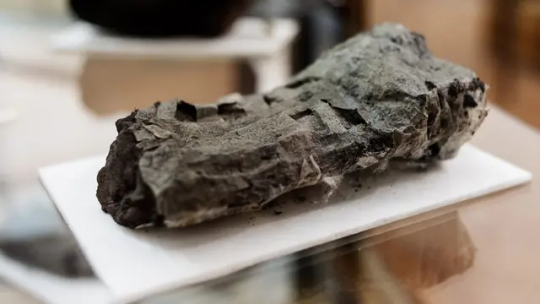
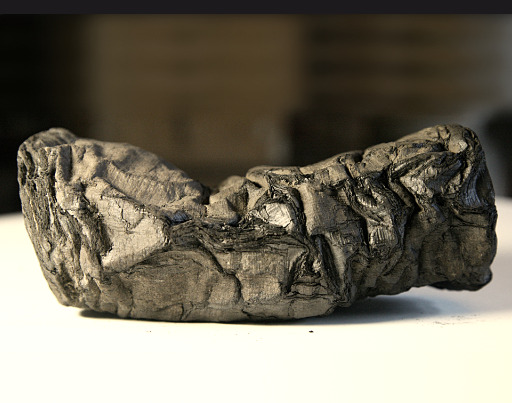
Three Students Just Deciphered the First Passages of a 2,000-Year-Old Scroll Burned in Vesuvius’ Eruption
A Roman scroll, partially preserved when it was buried in the eruption of Mount Vesuvius in A.D. 79, has been virtually unwrapped and decoded using artificial intelligence.
The feat was achieved by three contestants in the Vesuvius Challenge, a competition launched in March 2023 in which people around the world raced to read the ancient Herculaneum papyri.
Papyrologists working with the Vesuvius Challenge believe the scroll contains “never-before-seen text from antiquity,” and the text in question is a piece of Epicurean philosophy on the subject of pleasure. The winning submission shows ancient Greek letters on a large patch of scroll, and the author seems to be discussing the question: are things that are scarce more pleasurable as a result?
The author, whose identity is unconfirmed, doesn’t think so: “As too in the case of food, we do not right away believe things that are scarce to be absolutely more pleasant than those which are abundant,” one passage from the scroll reads.
The three members of the winning team had previously individually made significant contributions to the competition. Luke Farritor, a computer science student at University of Nebraska-Lincoln, and Youssef Nader, a machine learning Ph.D. student at Freie University in Berlin, had been two of the first contestants to detect a smaller number of letters, winning $40,000 and $10,000 respectively. Julian Schilliger, a robotics student at ETH Zürich, developed a tool that began to automatically segment the scrolls. They will share the $700,000 grand prize.
Nat Friedman, a tech investor and executive, and one of the challenge’s organizers, recently printed out the winning submission. “All this has been in this dreamlike digital world in my imagination before," Friedman says. "Seeing it on paper, rolling it up, it just made it so tangible.”
There’s a lot more to discover. The scroll partially decoded by the winning submission was one of 800 discovered in a southern Italian villa that was first uncovered in 1750. The combined efforts of the competitors and organizers so far have resulted in around 5% of one scroll being read.


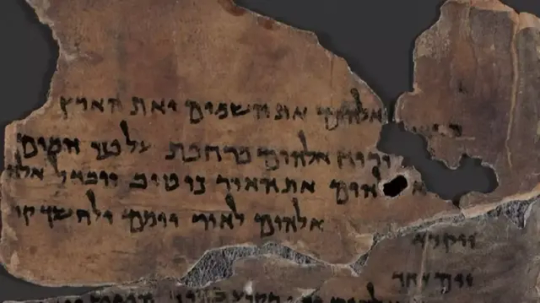

The final scramble to read the scrolls
Since the Vesuvius Challenge launched nearly a year ago, participants had both cooperated and competed, sharing their latest techniques with each other and posting pictures of their progress. But as the race for the grand prize intensified, the Discord, a social media platform where the participants shared information, went dark, says Friedman.
Of the eighteen submissions for the grand prize, most of them were received on the last day of the contest, Dec. 31, and three were sent in the final ten minutes, according to Friedman. Friedman recalls he was at home with his family around Christmas, decorating for the holiday while compulsively refreshing his phone, when the winning submission came in. “I ran into my little office at home and popped it open,” he says. “I was like, ‘Wow, this is really magnificent.’”
In accordance with the criteria set in March 2023, the winning submission contains four passages of 140 characters each, with at least 85% of the characters in each of those passages recoverable by professional papyrologists. It also contains a further 11 columns of text.
It isn’t known who authored the ancient scroll, but experts have developed theories. “Is the author Epicurus' follower, the philosopher and poet Philodemus, the teacher of Vergil? It seems very likely,” writes Richard Janko, professor of classical studies at the University of Michigan. “Is he writing about the effect of music on the hearer, and comparing it to other pleasures like those of food and drink? Quite probably.” Robert Fowler, a professor of Greek at the University of Bristol, also believes the author to be Philodemus. “Like other Epicureans, he valued pleasure above all - but pleasure rightly understood, not mere indulgence,” Fowler writes of the philosopher.
In the final section of the scroll, the author appears to criticize his intellectual adversaries, who “have nothing to say about pleasure, either in general or in particular, when it is a question of definition.”
“I can't help but read it as a 2000 year old blog post, arguing with another poster,” says Friedman. “It's ancient Substack, and people are beefing with each other, and I think that's just amazing.”
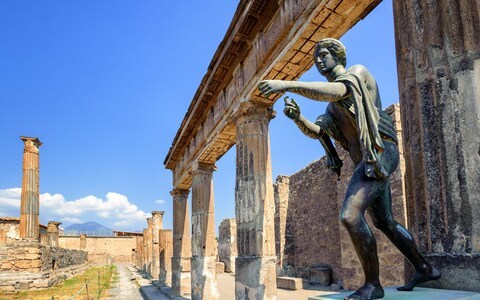
What comes next
The Vesuvius Challenge has issued a new grand prize for 2024 that will allow the AI-enhanced decoding to move at a faster pace.
The competitors largely have been developing algorithms for automatic letter detection—using AI to see traces of ink on segments of virtually unrolled scrolls. Aside from letter detection, the other main challenge associated with reading the scrolls is segmentation—separating the layers and virtually unrolling the scrolls. So far, this process has been highly manual; the Vesuvius Challenge employed three full-time segmenters. In order to ensure that they’d have segmented enough of the scroll for someone to win the grand prize, Friedman bought the team new monitors and computers to boost their productivity. The challenge for 2024 is to automate the segmentation process.
Friedman admits that he has had other tempting offers of new quests to pursue. Over the last year, he says his inbox has been filled with Robinson Crusoe-esque proposals, from people alerting him to lost shipwrecks and ancient cities, undecoded languages, and strange glyphs on the sides of mountains.
But he can’t walk away. He wants to help read all of the 800 scrolls already discovered in the villa. And some archeologists believe there is a main library containing tens of thousands of scrolls, still waiting to be excavated.
To expedite the excavation, Friedman has obtained the mobile number of the Italian civil servant responsible for the villa, whom he has texted, twice. “My hope is that I won't have to go and dig it out myself,” says Friedman. “But if that's what it comes to, I will.”
By WILL HENSHALL.
#AI reads ancient scroll buried by Vesuvius eruption#Three Students Just Deciphered the First Passages of a 2000-Year-Old Scroll Burned in Vesuvius’ Eruption#Herculaneum#Herculaneum papyri#Villa of the Papyri#Mount Vesuvius#ancient artifacts#archeology#archeolgst#history#history news#ancient history#ancient culture#ancient civilizations#roman history#roman empire#long post#long reads
75 notes
·
View notes
Text
Two thousand years ago, a volcanic eruption buried an ancient library of papyrus scrolls now known as the Herculaneum Papyri.
In the 18th century the scrolls were discovered. More than 800 of them are now stored in a library in Naples, Italy; these lumps of carbonized ash cannot be opened without severely damaging them. But how can we read them if they remain rolled up?
On March 15th, 2023, Nat Friedman, Daniel Gross, and Brent Seales launched the Vesuvius Challenge to answer this question. Scrolls from the Institut de France were imaged at the Diamond Light Source particle accelerator near Oxford. We released these high-resolution CT scans of the scrolls, and we offered more than $1M in prizes, put forward by many generous donors.
A global community of competitors and collaborators assembled to crack the problem with computer vision, machine learning, and hard work.
Less than a year later, in December 2023, they succeeded. Finally, after 275 years, we can begin to read the scrolls.
Grand Prize
There was one submission that stood out clearly from the rest. Working independently, each member of our team of papyrologists recovered more text from this submission than any other. Remarkably, the entry achieved the criteria we set when announcing the Vesuvius Challenge in March: 4 passages of 140 characters each, with at least 85% of characters recoverable. This was not a given: most of us on the organizing team assigned a less than 30% probability of success when we announced these criteria! And in addition, the submission includes another 11 (!) columns of text — more than 2000 characters total.
The results of this review were clear and unanimous: the Vesuvius Challenge Grand Prize of $700,000 is awarded to a team of three for their excellent submission. Congratulations to Youssef Nader, Luke Farritor, and Julian Schilliger!
Runners up
Of the remaining submissions, the scores from our team of papyrologists identify a three-way tie for runner up. These entries show remarkably similar readability to each other, but still stand out from the rest by being significantly more readable. Congratulations to the following teams, each taking home $50,000!
Shao-Qian Mah. GitHub
Elian Rafael Dal Prá, Sean Johnson, Leonardo Scabini, Raí Fernando Dal Prá, João Vitor Brentigani Torezan, Daniel Baldin Franceschini, Bruno Pereira Kellm, Marcelo Soccol Gris, and Odemir Martinez Bruno. GitHub
Louis Schlessinger and Arefeh Sherafati. GitHub
What does the scroll say?
To date, our efforts have managed to unroll and read about 5% of the first scroll. Our eminent team of papyrologists has been hard at work and has achieved a preliminary transcription of all the revealed columns. We now know that this scroll is not a duplicate of an existing work; it contains never-before-seen text from antiquity. The papyrology team are preparing to deliver a comprehensive study as soon as they can. You all gave them a lot of work to do! Initial readings already provide glimpses into this philosophical text. From our scholars:
The general subject of the text is pleasure, which, properly understood, is the highest good in Epicurean philosophy. In these two snippets from two consecutive columns of the scroll, the author is concerned with whether and how the availability of goods, such as food, can affect the pleasure which they provide.
Do things that are available in lesser quantities afford more pleasure than those available in abundance? Our author thinks not: “as too in the case of food, we do not right away believe things that are scarce to be absolutely more pleasant than those which are abundant.” However, is it easier for us naturally to do without things that are plentiful? “Such questions will be considered frequently.”
Since this is the end of a scroll, this phrasing may suggest that more is coming in subsequent books of the same work. At the beginning of the first text, a certain Xenophantos is mentioned, perhaps the same man — presumably a musician — also mentioned by Philodemus in his work On Music.
Richard Janko writes:
“Is the author Epicurus' follower, the philosopher and poet Philodemus, the teacher of Vergil? It seems very likely.
Is he writing about the effect of music on the hearer, and comparing it to other pleasures like those of food and drink? Quite probably.
Does this text come from his four-part treatise on music, of which we know Book 4? Quite possibly: the title should soon become available to read.
Is the Xenophantus who is mentioned the celebrated flute-player, or the man famous in antiquity for being unable to control his laughter, or someone else entirely? So many questions! But improvements to the identification of the ink, which can be expected, will soon answer most of them. I can hardly wait.”
Scholars might call it a philosophical treatise. But it seems familiar to us, and we can’t escape the feeling that the first text we’ve uncovered is a 2000-year-old blog post about how to enjoy life. Is Philodemus throwing shade at the stoics in his closing paragraph, asserting that stoicism is an incomplete philosophy because it has “nothing to say about pleasure?” The questions he seems to discuss — life’s pleasures and what makes life worth living — are still on our minds today.
We can expect many more works from Philodemus in the current collection, once we’re able to scale up this technique. But there could be other text as well — an Aristotle dialog, a lost history of Livy, a lost Homeric epic work, a poem from Sappho — who knows what treasures are hidden in these lumps of ash.
50 notes
·
View notes
Text

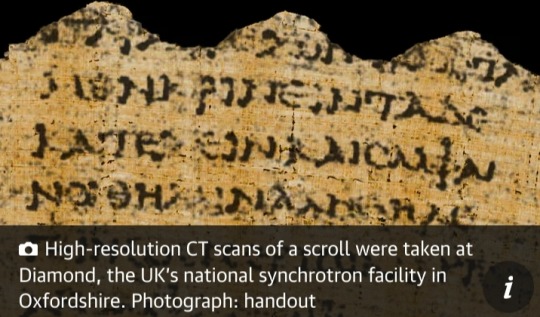
Scholars of antiquity believe they are on the brink of a new era of understanding after researchers armed with artificial intelligence read the hidden text of a charred scroll that was buried when Mount Vesuvius erupted nearly 2,000 years ago.
Hundreds of papyrus scrolls held in the library of a luxury Roman villa in Herculaneum were burned to a crisp when the town was devastated by the intense blast of heat, ash and pumice that destroyed nearby Pompeii in AD79.
Excavations in the 18th century recovered more than 1,000 whole or partial scrolls from the mansion, thought to be owned by Julius Caesar’s father-in-law.
However, the black ink was unreadable on the carbonised papyri and the scrolls crumbled to pieces when researchers tried to open them.
The breakthrough in reading the ancient material came from the $1m Vesuvius Challenge, a contest launched in 2023 by Brent Seales, a computer scientist at the University of Kentucky, and Silicon Valley backers.
The competition offered prizes for extracting text from high-resolution CT scans of a scroll taken at Diamond, the UK’s national synchrotron facility in Oxfordshire.
On Monday, Nat Friedman, a US tech executive and founding sponsor of the challenge, announced that a team of three computer-savvy students, Youssef Nader in Germany, Luke Farritor in the US, and Julian Schilliger in Switzerland, had won the $700,000 (£554,000) grand prize after reading more than 2,000 Greek letters from the scroll.

Papyrologists who have studied the text recovered from the blackened scroll were stunned at the feat.
“This is a complete gamechanger,” said Robert Fowler, emeritus professor of Greek at Bristol University and chair of the Herculaneum Society.
“There are hundreds of these scrolls waiting to be read.”
Dr Federica Nicolardi, a papyrologist at the University of Naples Federico II, added:
“This is the start of a revolution in Herculaneum papyrology and in Greek philosophy in general. It is the only library to come to us from ancient Roman times.”
“We are moving into a new era,” said Seales, who led efforts to read the scrolls by virtually unwrapping the CT images and training AI algorithms to detect the presence of ink.
He now wants to build a portable CT scanner to image scrolls without moving them from their collections.
In October, Farritor won the challenge’s $40,000 “first letters” prize when he identified the ancient Greek word for “purple” in the scroll.
He teamed up with Nader in November, with Schilliger, who developed an algorithm to automatically unwrap CT images, joining them days before the contest deadline on 31 December.
Together, they read more than 2,000 letters of the scroll, giving scholars their first real insight into its contents.
“It’s been an incredibly rewarding journey,” said Youssef.
“The adrenaline rush is what kept us going. It was insane. It meant working 20-something hours a day. I didn’t know when one day ended and the next day started.”
“It probably is Philodemus,” Fowler said of the author.
“The style is very gnarly, typical of him, and the subject is up his alley.”
The scroll discusses sources of pleasure, touching on music and food – capers in particular – and whether the pleasure experienced from a combination of elements owes to the major or minor constituents, the abundant or the scare.
“In the case of food, we do not right away believe things that are scarce to be absolutely more pleasant than those which are abundant,” the author writes.
“I think he’s asking the question: what is the source of pleasure in a mix of things? Is it the dominant element, is it the scarce element, or is it the mix itself?” said Fowler.
The author ends with a parting shot against his philosophical adversaries for having “nothing to say about pleasure, either in general or particular."



Seales and his research team spent years developing algorithms to digitally unwrap the scrolls and detect the presence of ink from the changes it produced in the papyrus fibres.
He released the algorithms for contestants to build on in the challenge.
Friedman’s involvement proved valuable not only for attracting financial donors.
When Seales was meant to fly to the UK to have a scroll scanned, a storm blew in cancelling all commercial flights.
Worried they might lose their slot at the Diamond light source, Friedman hastily organised a private jet for the trip.
Beyond the hundreds of Herculaneum scrolls waiting to be read, many more may be buried at the villa, adding weight to arguments for fresh excavations.
"The same technology could be applied to papyrus wrapped around Egyptian mummies," Fowler said.
These could include everything from letters and property deeds to laundry lists and tax receipts, shining light on the lives of ordinary ancient Egyptians.
“There are crates of this stuff in the back rooms of museums,” Fowler said.
The challenge continues this year with the goal to read 85% of the scroll and lay the foundations for reading all of those already excavated.
Scientists need to fully automate the process of tracing the surface of the papyrus inside each scroll and improve ink detection on the most damaged parts.
“When we launched this less than a year ago, I honestly wasn’t sure it’d work,” said Friedman.
“You know, people say money can’t buy happiness, but they have no imagination. This has been pure joy. It’s magical what happened, it couldn’t have been scripted better."
Source: The Guardian
youtube
How the Herculaneum Papyri were carbonised in the Mount Vesuvius eruption – Video
5 February 2024
#Herculaneum Papyri#Mount Vesuvius#volcanic eruption#antiquity#artificial intelligence#papyrus scrolls#Pompeii#AD79#Herculaneum#Youtube#carbonised papyri#$1m Vesuvius Challenge#Brent Seales#Diamond#papyrologist#Herculaneum papyrology#Ancient Rome#CT images#ai algorithms
9 notes
·
View notes
Text
From this:
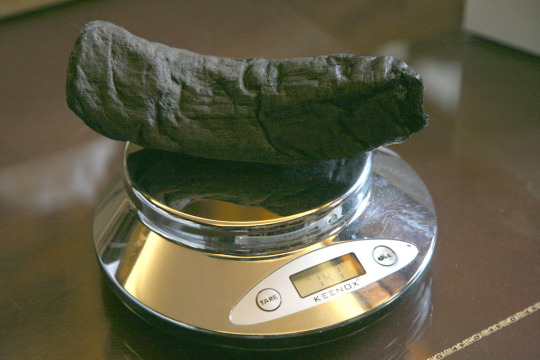
To this:

#vesuvius#vesuvius challenge#herculaneum papyri#this is what ai should be used for: work that cannot be done on a human timeline
0 notes
Text
It’s so hard to articulate just how excited I am about the Herculaneum papyri. Like, if you’ve ever been there it’s a place that feels so fucking eerie. It’s incredibly well preserved and I loved seeing everything, but I also had to step out early because I was feeling so emotional just being there. The fact that we are going to be able to experience this collection is mind blowing and also just another reminder of the frozen state of a ghost town.
#like there are second floors mostly intact there it’s incredible#I stood on the path looking over the town and tbh I almost wept#it’s just a place that inspires such incredible emotion I cannot wait to see what was this person’s library#text#classics#Herculaneum papyri
1 note
·
View note
Text

The Herculaneum papyri, ancient scrolls housed in the library of a private villa near Pompeii, were buried and carbonized by the eruption of Vesuvius in 79 AD. For almost 2,000 years, this lone surviving library from antiquity was buried underground under 20 meters of volcanic mud. In the 1700s, they were excavated, and while they were in some ways preserved by the eruption, they were so fragile that they would turn to dust if mishandled. How do you read a scroll you can’t open? For hundreds of years, this question went unanswered.
That is until Luke Farritor, a contestant of the Vesuvius Challenge, became the first person in two millennia to see an entire word from within an unopened scroll this August.
Shortly after that, another contestant, Youssef Nader, independently discovered the same word in the same area, with even clearer results — winning the second place prize of $10,000.
Indeed, the word held up to scrutiny. “Porphyras” is an exciting word: it means “purple” and is quite rare in ancient texts.
One papyrologist noted: “The sequence πορφυ̣ρ̣ας̣ may be πορφύ̣ρ̣ας̣ (noun, purple dye or cloths of purple) or πορφυ̣ρ̣ᾶς̣(adjective, purple). Due to the lack of context it is not possible to exclude πορφύ̣ρ̣α ς̣κ[ or πορφυ̣ρ̣ᾶ ς̣κ[.”
This is so cool, worth the read if you click through!
394 notes
·
View notes
Text

Tunneling into the Villa of the Papyri, Herculaneum, location of the only library from the ancient world whose collection has survived into the present day.
411 notes
·
View notes
Text
The Herculaneum papyri, ancient scrolls housed in the library of a private villa near Pompeii, were buried and carbonized by the eruption of Vesuvius in 79 AD. For almost 2,000 years, this lone surviving library from antiquity was buried underground under 20 meters of volcanic mud. In the 1700s, they were excavated, and while they were in some ways preserved by the eruption, they were so fragile that they would turn to dust if mishandled. How do you read a scroll you can’t open? For hundreds of years, this question went unanswered.
That is until Luke Farritor, a contestant of the Vesuvius Challenge, became the first person in two millennia to see an entire word from within an unopened scroll this August. For that, we are thrilled to award Luke a $40,000 First Letters Prize, which required contestants to find at least 10 letters in a 4 cm2 area in a scroll.
LET'S FUCKING GOOOOOOOO
Shortly after that, another contestant, Youssef Nader, independently discovered the same word in the same area, with even clearer results — winning the second place prize of $10,000.
The word is πορφύ̣ρ̣ας̣ (porphyras, meaning "purple").
141 notes
·
View notes
Text
The Vesuvius eruption may have destroyed Herculaneum, but it also preserved it. The site is a treasure trove of wooden artifacts rarely preserved from antiquity.
26 notes
·
View notes
Text
Truly I feel a bit unhinged about the Herculaneum like a child a week before Christmas. What's in those boxes what's under the tree will it be everything I've ever dreamed of or things I never knew I wanted or tangerines and will those tangerines contain new pits and slices unlike the ones we have now please I want to knowwwww
#herculaneum#papyri#taking me back to the 2014 new Sappho poem discovery but potentially unlimited#I'm weeping I'm shaking I'm waiting for the inevitable#( quitting my job the moment they discover Ovid's Medea )
20 notes
·
View notes
Text
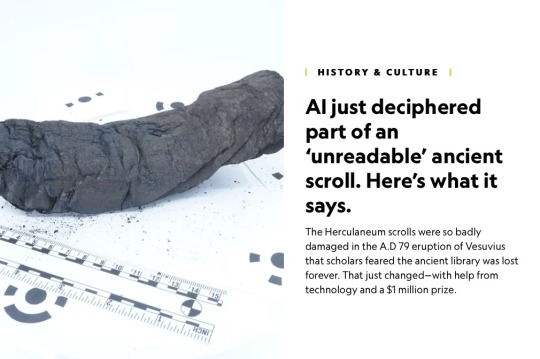
AI Helps Decipher First Text of Unreadable Ancient Herculaneum Scroll
With the help of artificial intelligence, a colorful ancient Greek word has emerged from a text damaged in the A.D. 79 eruption of Vesuvius, marking an important milestone in the centuries-long attempt to decipher an unparalleled ancient library assumed to be lost forever.
That word, πορφύραc, referring to purple dye or purple-colored clothes—a color closely associated with royalty and power—comes from one of the famed Herculaneum scrolls discovered by workers digging up the ancient town of Herculaneum near Pompeii in 1752. The roughly 1,800 unearthed papyrus scrolls—believed to contain literary and philosophical works from the first and second centuries B.C.—had been reduced to brittle, charred lumps by the heat and gasses of the eruption. And those carbonized scrolls that workers didn’t throw away more than 250 years ago have largely languished since then in storerooms, written off as unreadable curiosities.
Technological developments over the past two decades have helped researchers get closer to being able to “read” the fragile scrolls. But only the very recent acceleration of artificial intelligence and computing have finally made it possible to begin unlocking their secrets—all without opening them.
Researchers backed by Silicon Valley investors put decoding efforts into overdrive this spring by launching the Vesuvius Challenge.The global competition offers prize money for significant benchmarks in coaxing the long-lost Herculaneum texts from their carbonized husks by applying machine learning techniques to digital images of the scrolls.
The challenge awarded its first installment of the $1 million total prize pot today to two competitors—an American college student and an Egyptian graduate student in Germany—who separately revealed at least 10 letters from a single small area of an intact scroll, including the colorful and complete “πορφύραc.”
With this achievement, scientists say they are now one step closer to being able to read full passages and—someday—entire scrolls that had previously been considered unreadable.
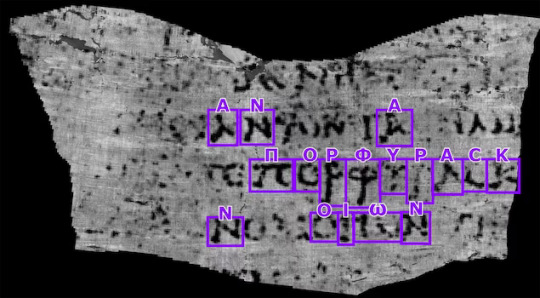
“We knew if we could read just one [scroll], then all the other ones would be available with the same method or some augmented method,” says Brent Seales, a computer scientist at the University of Kentucky who’s been trying to decode the Herculaneum scrolls for the last 20 years and leads the university’s Digital Restoration Initiative. “And this is a big moment because we are now proving not just to ourselves but to the entire global community that the scrolls are readable.”
Reading the Herculaneum scrolls, he says, will help connect us to the past in “astounding” ways.
“These people were humans just like us,” Seales adds. “These were intellectuals. Their thoughts were complex. It says something about what it means to be human to be able to read a thought that came directly from a single person or a group of people so long ago.”
An era ‘shrouded in mystery’
Since the mid-1700s, people have made various attempts at reading some of the less damaged scrolls from Herculaneum. One method involved cutting the scrolls in half and scraping away layers one at a time to see the text inside; another involved slowly unwinding the scrolls with a specially built machine. Though these 18th and 19th century efforts did allow conservators to copy down some of the words inside, they often damaged—or, worse, totally destroyed—many of the scrolls in the process.
Many of the previously opened scrolls revealed Greek philosophical texts, including some by philosophers Epicurus and Philodemus. But, by and large, the contents of the unopened scrolls are unknown—and that’s part of what makes the quest to open them so enticing. On top of that, the Herculaneum scrolls, discovered in a villa likely belonging to Julius Caesar’s father-in-law, represent the largest known surviving library from classical antiquity. Revealing their texts would be a boon to historians and to our collective understanding of the past.
“Some 95 percent of the material from the classical period is lost, so we just don’t have anything, and yet we know it was one of the most important philosophical periods of humanity,” says Seales. “It’s an era shrouded in mystery for which we’ve lost most of the material.”
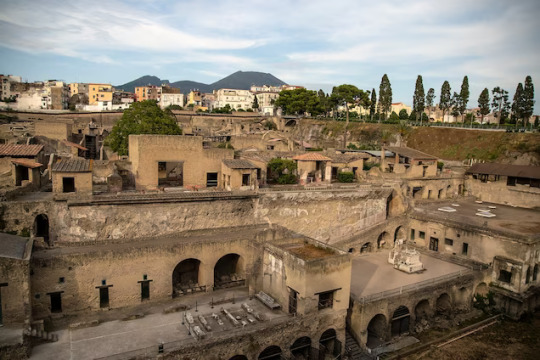
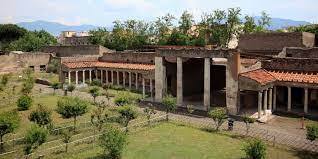
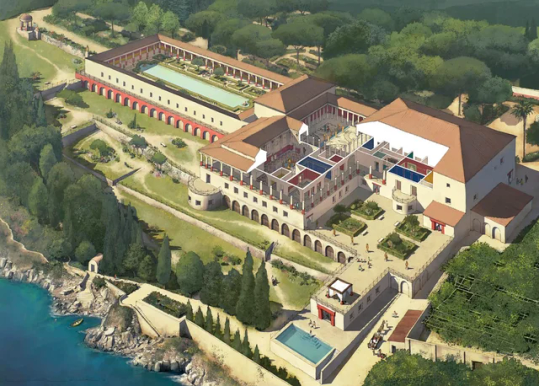
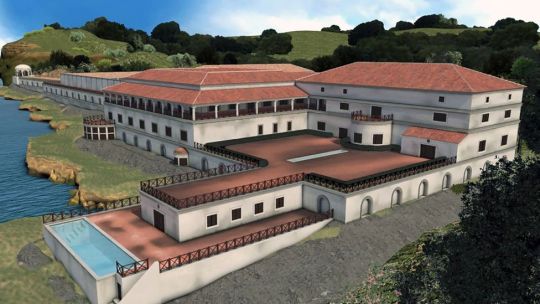
Between 500 and 600 carbonized scrolls from Herculaneum—kept in museum, university and national collections in England, France and Italy—remain unopened, though the exact figure is hard to estimate because many are fragmented. The scrolls are extremely brittle, which means physically unrolling them is not a viable option. “If you drop one, it would shatter like glass,” Seales explains.
Technological advancements since the early 2000s have helped researchers overcome this hurdle, including using CT scans to make 3D images of ancient scrolls. From there, the Digital Restoration Initiative team developed software that could “virtually unwrap” the 3D images to produce flattened segments. This method enabled them to read previously hidden text from the Ein Gedi scroll, a charred and fragmented scroll from the Middle East dated to the third or fourth century A.D.
When researchers tried to use this method to read the scrolls carbonized by Vesuvius, however, they ran into another roadblock. The ink used on the Ein Gedi scroll contained metal, which meant the letters were visible on the CT scan. The Herculaneum scrolls, by contrast, were written with carbon-based ink, which, to the human eye, makes the symbols indistinguishable from the carbonized papyrus on the CT scans.
Undeterred, researchers wondered if higher-resolution scans of the scrolls produced by a particle accelerator could provide an even more detailed view of the carbonized papyrus. Sure enough, at very high resolutions, the scans revealed visible areas where the ink slightly altered the shape and texture of the papyrus fibers. “The carbon-based ink sort of fills in the holes that are the grid of the papyrus—it coats them and makes them a little thicker,” says Seales.
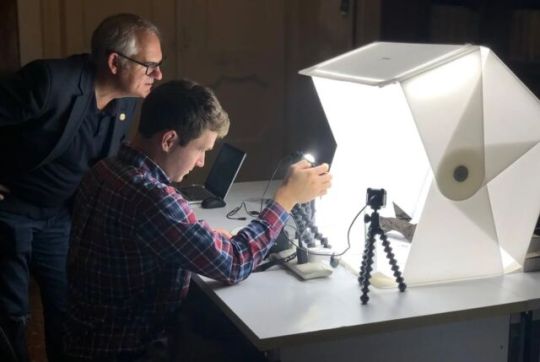
Seales and his Digital Restoration Initiative colleagues then developed and trained a machine learning model to detect these subtle differences in the carbonized papyrus surfaces. But to take the project any further, they needed human beings to help. That’s where the Vesuvius Challenge comes in. Hoping to harness the collective power of citizen scientists around the world, Seales teamed up with Silicon Valley investors and put his team’s data, code, and methods online for anyone to access. The challenge’s pitch? After 275 years, the puzzle of the Herculaneum scrolls has been reduced to a software problem—one that anyone, anywhere with access to a computer could, in theory, contribute to solving.
In March, the challenge team released thousands of 3D images of two rolled-up scrolls, as well as a machine-learning algorithm trained to detect the invisible letters and symbols written on the layers of carbonized papyrus. They also offered $1 million in prize money to incentivize participants to build upon the AI technology and, ultimately, speed up the deciphering.
Two competitors extracted the new snippet of text separately: Luke Farritor, a 21-year-old undergraduate at the University of Nebraska-Lincoln, and Youssef Nader, a 26-year-old doctoral student at Freie Universität Berlin. Because Farritor revealed the text first, he wins $40,000, while Nader wins $10,000. Papyrologists also authenticated their findings.
Still on the line is the $700,000 grand prize, which will go to the first person or team that can reveal at least four separate passages from the two scrolls. Each passage must contain at least 140 characters of continuous text, with no more than 15 percent of the characters missing or illegible, by the end of 2023.
Citizen scientists can find everything they need online, from the history of the scrolls themselves to downloadable data, algorithms, and tutorials. And while the contest is open to anyone, it’s technical work that’s so far mostly attracted computer scientists who are already well-versed in machine learning. Competitors are helping advance the project forward by virtually unwrapping additional sections of scrolls via software and methods developed by Seales; they’re also working to improve the machine learning model by providing it with additional training examples from the newly unwrapped digital segments of papyrus.

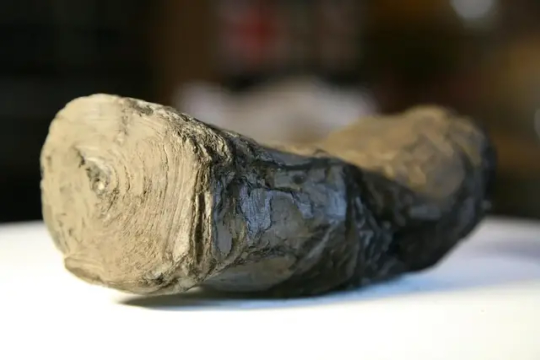
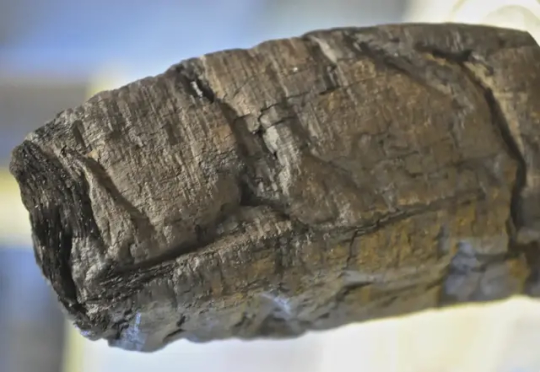
‘The scrolls are readable’
The competitors—an estimated 1,500 to 2,000 of them in total, according to Seales—have done their part. In just six months, they’ve made huge strides toward solving this puzzle, including the three full lines of text that Farritor and Nader recently revealed. “We’ve seen 10 or 20 person years of work from these competitors,” says Seales.
So, what’s motivating the contestants to volunteer hours and hours of their time toward the project? The prize money is a big factor (both Nader and Farritor say they want to win the grand prize) but, on top of that, some competitors are simply intrigued by the scrolls themselves. “When things were a bit frustrating and things were not working, I felt like I was unable to give up because I was just too curious—I really need to know what’s going on here,” says Nader.
There’s also the allure of working on a project backed by Silicon Valley entrepreneurs and investors. Former GitHub CEO Nat Friedman launched the contest, along with venture capitalist Daniel Gross; other startup founders and investors also chipped in prize money. “There’s kind of this Silicon Valley prestige,” says Farritor, who spent the summer interning at SpaceX.
From here, the machine learning model should continue to improve even more and reveal additional letters until, ideally, researchers will be able to decipher all of the Herculaneum scrolls. These efforts could pave the way for future excavation work at Herculaneum, where some experts believe even more scrolls are still buried.
“Some people might think, ‘What are you going to all that trouble for?’ but I don’t believe that,” says Seales. “This is an amazing period in human history. We’re talking about more works from that period. Yeah, I want more, I want it all.”
By Sarah Kuta.
#AI Helps Decipher First Text of Unreadable Ancient Herculaneum Scroll#Mount Vesuvius#herculaneum#herculaneum scrolls#Villa of the Papyri#pompeii#ancient artifacts#archeology#archeolgst#history#history news#ancient history#ancient culture#ancient civilizations#roman history#roman empire#roman art#long reads
63 notes
·
View notes
Text
Fun Fact

Do you know about the carbonized papyri of Herculaneum? Thanks to AI, they can now be read without any damage! This allows us to gain some interesting new information: for example, one of the recently deciphered papyri tells us about the last night of Plato. Apparently, he had a high fever and couldn't stand the music played while he was on his deathbed. We also learned where he was buried: in the garden of the Academy, near a temple dedicated to the Muses.
I hate AI in many contextes, but I'm glad it's being used in this one.
#studybrl#study blog#student#studying#University#Uni#College#Dark academia#Light academia#classic academia#renaissance#Ancient Rome#Ancient Greece#herculaneum#vesuvius#pompeii#papyrus#Papyri#Carbonized papyri#79 d.C.#Ancient greek#Latin#AI#History#Literature#Classics#Ancient literature#Plato#Platonic academy#aristotle
4 notes
·
View notes
Text
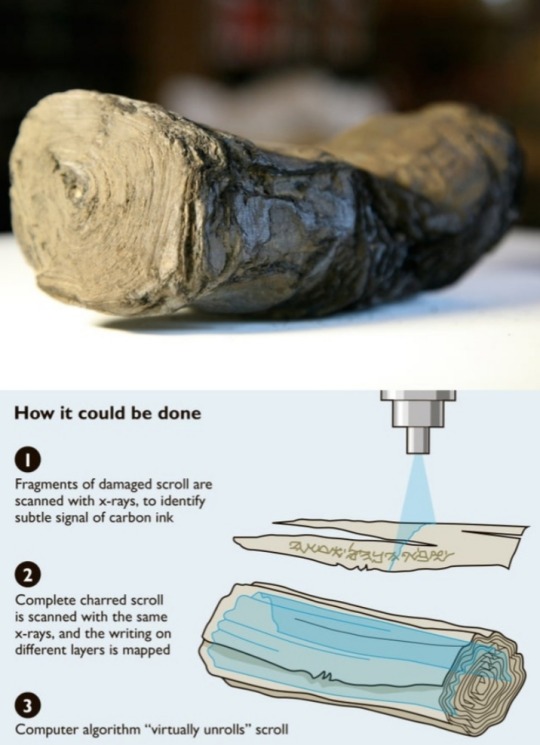
The Herculaneum papyri are more than 1,800 papyri that were carbonized by the eruption of Mount Vesuvius (79 CE).
It's the only surviving library from antiquity that exists in its entirety. With x-rays, these scrolls are being read for the first time in millennia.
Due to the eruption of Mount Vesuvius in 79 AD, bundles of scrolls were carbonized by the intense heat of the pyroclastic flows.
This intense parching took place over an extremely short period of time, in a room deprived of oxygen, resulting in the scrolls' carbonization into compact and highly fragile blocks.
They were then preserved by the layers of cement-like rock.
In 1752, workmen of the Bourbon royal family accidentally discovered what is now known as the Villa of the Papyri.
28 notes
·
View notes
Text
god if we had Lucan's Silvae
5 notes
·
View notes
Text
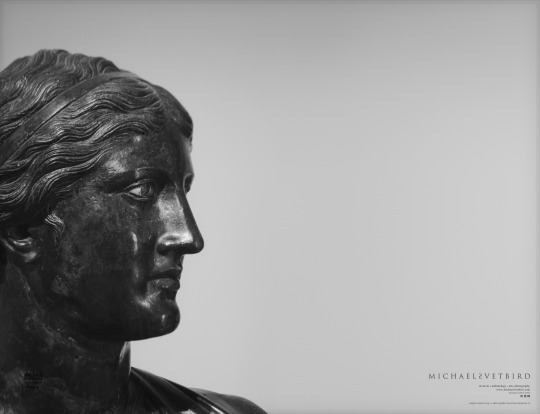
SAPPHO | Σαπφώ
Bronze Bust of Sappho from Villa of the Papyri, Herculaneum
[https://en.wikipedia.org/wiki/Villa_of_the_Papyri]
1st c. BC Roman copy of the 2nd BC Greek original.
Museo Archeologico Nazionale di Napoli | MANN
[2nd Floor]
• Web : https://mann-napoli.it/en/home-english
• FB: https://www.facebook.com/MANNapoli
• IG: @museoarcheologiconapoli
• X: @MANNapoli
MANN | Michael Svetbird ph©msp | 19|23 6000X4600 600 [Closeup]
The photographed object is collection item of MANN, photo is subject to copyrights
[non commercial use | sorry for the watermarks]
📸 Part of the "PROFILE Shots" MSP Online Photo-gallery:
👉 D-ART:
https://www.deviantart.com/svetbird1234/gallery/89669842/profile-shots
👉 PINTEREST:
https://www.pinterest.com/Michael_Svetbird/profile-shots
👉 FB Album:
https://www.facebook.com/media/set/?set=a.2017689605266273&type=3
.
#naples#mann#archaeological museum#ancient sculpture#papyri#herculaneum#ancient art#roman sculpture#greek sculpture#sculpture#antiquity#ancient#archaeology#museology#heritage#art history#culture#sappho#σαπφώ#ancient rome#ancient world#women in history#photo gallery#profile#sculpture photography#art photography#archaeology photography#museum photography#michaelsvetbird
2 notes
·
View notes